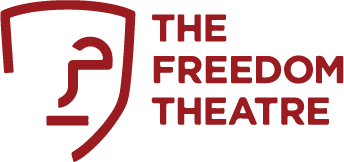Day two of The Freedom Theatre Festival and Forum on Cultural Resistance saw festival participants undertake a tour of the historical and ancient site of Sebastia.
Ahmad Kayed, the guide and a local from Sebastia, showed participants the Roman amphitheatre, which has been bulldozed in parts by the Israeli army. He indicated the spot in the theatre premises, where the bulldozers had stood.
Sebastia was at one point the top tourist destination in the Middle East. Kayed spoke of efforts to have Sebastia declared as a UNESCO site to protect it and of efforts to keep the theatre active by organising dabke performances and festivals. He pointed to nearby Israeli settlements and described their attempts to take over local lands.
Students of The Freedom Theatre accompanied by oud player Samer Abu Hantash performed playback theatre in the amphitheatre, enacting stories and impressions shared by participants.
Photos by Bryan MacCormack, with Left in Focus
A parallel activity for local women was organised at the Women Centre in Jenin refugee camp, where The Freedom Theatre’s female students performed playback theatre based on the women’s stories. A symposium observing the 14th anniversary of the invasion of the refugee camp was also organised at the Popular Committee for Services in Jenin Refugee Camp; a historic event that gathered local leaders around the topic of ‘Cultures of resistance’.
Later in the afternoon, three theatre workshops were given: on the legacy of the great revolutionary of twentieth century theatre, Bertolt Brecht, on the artistic and production practices of The Freedom Theatre, and on street theatre techniques of Jana Natya Manch from India.
Photos by Bryan MacCormack, with Left in Focus
The evening ended with a performance of The Seige by The Freedom Theatre.
